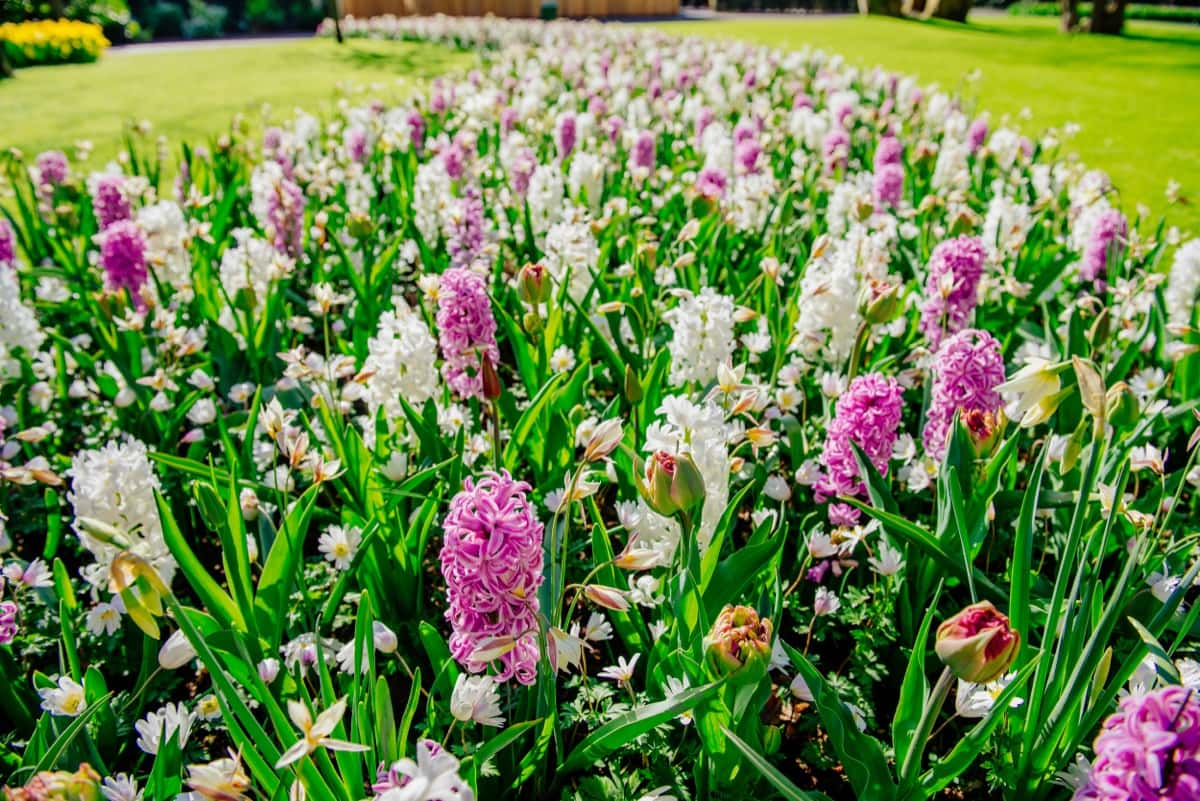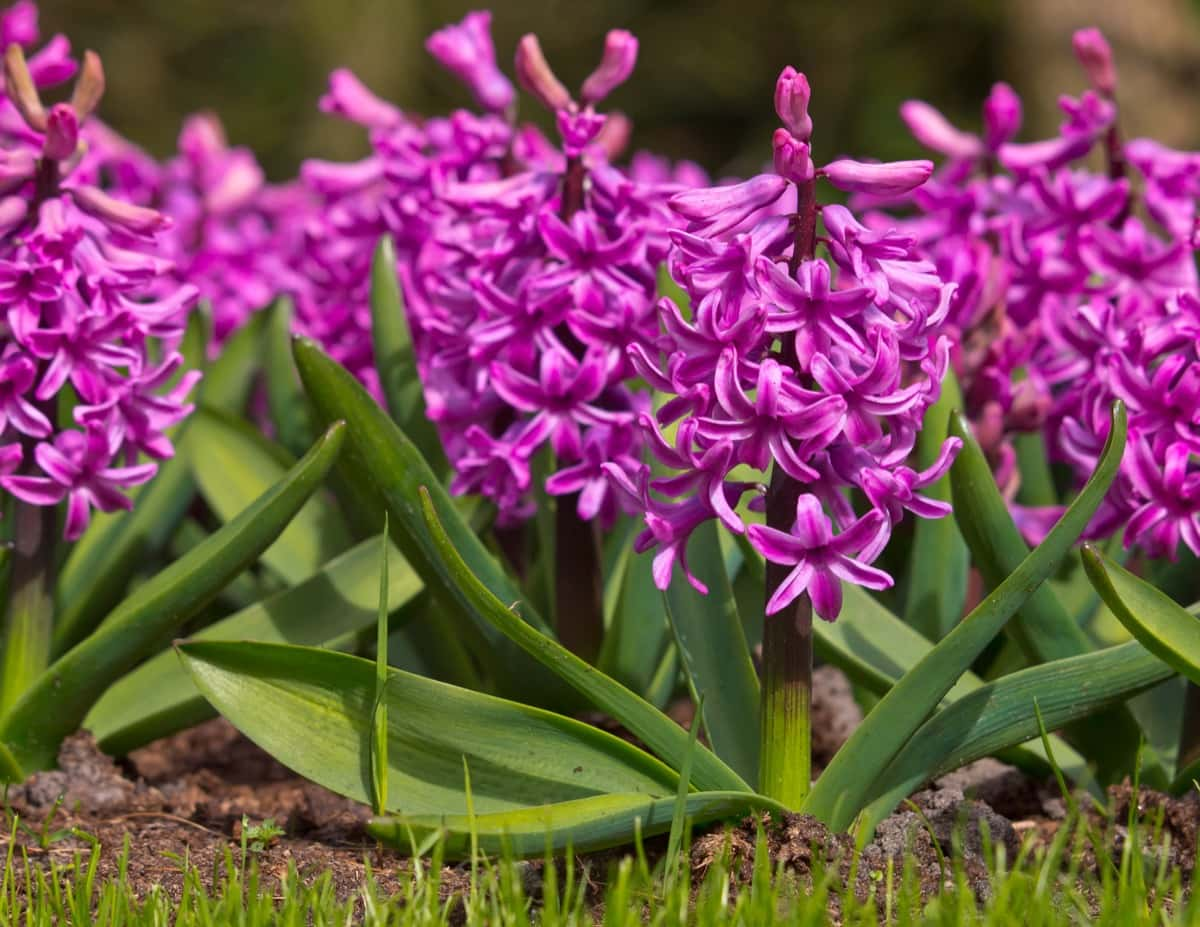Hyacinths are popular spring-blooming bulbs known for their vibrant colors and sweet fragrance. They are a staple in many gardens worldwide, and with the right care, they can offer a beautiful display of color year after year. One essential aspect of hyacinth care is the correct use of fertilizer. In this article, we’ll delve into the subject and provide comprehensive advice on the best fertilizers for hyacinth, when to apply them, and how to use them correctly.

Like other flowering bulbs, hyacinths derive the nutrients they need to thrive from the soil. A soil rich in organic matter can typically provide the majority of these nutrients. However, supplementing this natural nutrition with appropriate fertilizers is often beneficial to ensure the hyacinths’ optimal health and flowering.
Best Fertilizer for Hyacinth
While planting hyacinths, look for a fertilizer with a balanced N-P-K ratio (N = Nitrogen, P = Phosphorus, and K = Potassium). A fertilizer labeled as 10-10-10 or 20-20-20 would be suitable, as these numbers indicate an equal ratio of these three essential nutrients. Nitrogen promotes healthy leaf growth, which is essential for photosynthesis. Phosphorus is crucial for the development of roots, stems, flowers, and fruits.
Potassium enhances the overall strength and vigor of the plant, helping it resist diseases and tolerate stress. While these three nutrients are the most essential for hyacinths, they also need other micronutrients like iron, magnesium, and zinc for optimal growth. Therefore, a complete fertilizer that also includes these trace elements can be beneficial.
When to Apply Fertilizer to Hyacinth
Fertilizer application timing is just as important as the fertilizer type. Hyacinths have a specific growth cycle, and different stages of this cycle require different nutrient applications. When you plant the bulbs, the best time to fertilize hyacinths is in the fall. This initial application of fertilizer will provide the nutrients the bulbs need to establish a strong root system over the winter. The fertiliser should be thoroughly combined with the soil at the bottom of the planting hole so that the bulbs can readily absorb the nutrients.
The second time to fertilize is in early spring when the shoots emerge from the ground. This application will provide the nutrients necessary for vigorous growth and abundant flowering. Lastly, a post-flowering fertilizer application is beneficial to replenish the nutrients used during blooming and help the bulb prepare for the next growing season. After the hyacinths have bloomed, don’t remove the leaves; they will continue photosynthesizing, producing food stored in the bulb for next year’s growth.
How to Apply Fertilizer to Hyacinth
Fall application: At planting time, dig a hole about four times as deep as the height of the bulb. Mix a handful of balanced fertilizer with the soil at the bottom of the hole. Backfill the hole with soil and plant the bulb pointed end up. Spring application: Once you see the green shoots emerging from the ground, it’s time for the second fertilizer application.
Fertiliser should be sprinkled around the plants’ bases, not on the leaves, to prevent burning. Water well after application to help the nutrients penetrate the soil and reach the roots. Post-flowering application: After the flowers have faded, apply another round of fertilizer following the same method as the spring application. Remember that the plant will still be utilizing the leaves to create and store energy for the next year’s growth until it has naturally yellowed and died back.
In case you missed it: How to Increase Flowers in Okra: Explained in 10 Simple Steps for Higher Yield and Profit

Choosing Organic or Inorganic Fertilizers
Natural fertilizers can be made from everything from plants and animals to minerals. They are generally slower-releasing, providing a steady supply of nutrients over a longer period. They also improve soil structure and promote beneficial soil microbes. Examples of organic fertilizers suitable for hyacinths include bone meal, fish meal, and compost.
Inorganic fertilizers, also known as synthetic or chemical fertilizers, are manufactured products that contain nutrients in a form readily available to plants. They tend to work faster than organic fertilizers but can be more prone to leaching out of the soil, especially in heavy rain. Overuse can also potentially harm beneficial soil organisms and lead to a buildup of salts in the soil.
Safety Precautions When Using Fertilizers
Regardless of your chosen fertilizer, it’s important to follow safety precautions. Always read and follow the manufacturer’s instructions. Over-fertilizing can cause more harm than good by burning the roots and foliage or creating a nutrient imbalance in the soil. When handling fertilizers, particularly synthetic ones, it’s important to always use gloves to prevent skin damage. If you’re using a powdered or granulated product, avoid inhaling it. Also, keep fertilizers out of the reach of children and pets.
Monitoring Your Hyacinths’ Health
Regularly monitoring the health of your hyacinths will help you identify any nutrient deficiencies or other problems early on. If your hyacinths’ leaves are yellowing prematurely or the plants are weak and spindly, it might indicate a lack of certain nutrients. If you notice such issues, having your soil tested might be a good idea. You can learn about the pH and nutrient content of your soil, as well as whether or not it is acidic or alkaline, from the results of a soil test.
Repeat Fertilization Annually
Fertilizing your hyacinths is not a one-time task. Fertilization is a yearly procedure that yields the finest outcomes when repeated. Each fall, when you plant new bulbs or when your existing bulbs are dormant, apply fertilizer to provide the necessary nutrients for the following spring’s growth. Apply fertilizer again in the spring after the plant has flowered to restore nutrients and get it ready for the next growing season.
In case you missed it: How to Start Backyard Raised Bed Garden in the USA: For Vegetables, Flowers, Fruits, and Herbs

Conclusion
Proper fertilization plays a vital role in the health and blooming of your hyacinths. A balanced fertilizer applied at the right times can support your plants’ growth, flowering, and overall vigor. Remember to follow the manufacturer’s instructions and safety precautions, and watch your plants’ health to catch any potential issues early. With the right care, your hyacinths can provide a spectacular display of color and fragrance in your garden every spring.
- Feed Your Flock for Less: Top 10 Tips to Save on Chicken Feed
- Ultimate Guide to Ossabaw Island Hog: Breeding, Raising, Diet, and Care
- Hatching Answers: The Top 10 Reasons Your Chickens Aren’t Laying Eggs
- Eggs and Economics: Breaking Down the Cost of Raising Backyard Chickens
- Defend Your Greens: Proven Methods to Keep Iguanas Out of Your Garden
- Ultimate Guide to Cinnamon Queen Chicken: A Comprehensive Guide for Beginners
- Ultimate Guide to California Tan Chicken: Breeding, Raising, Diet, Egg-Production and Care
- Ultimate Guide to Marsh Daisy Chicken: Breeding, Raising, Diet, and Care
- 10 Types of Chicken Farming Businesses You Can Start for Profits